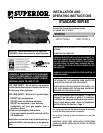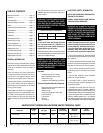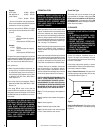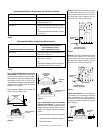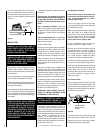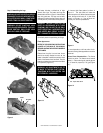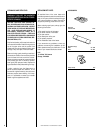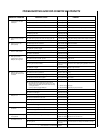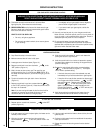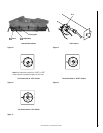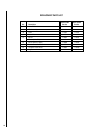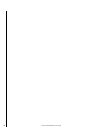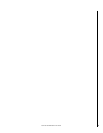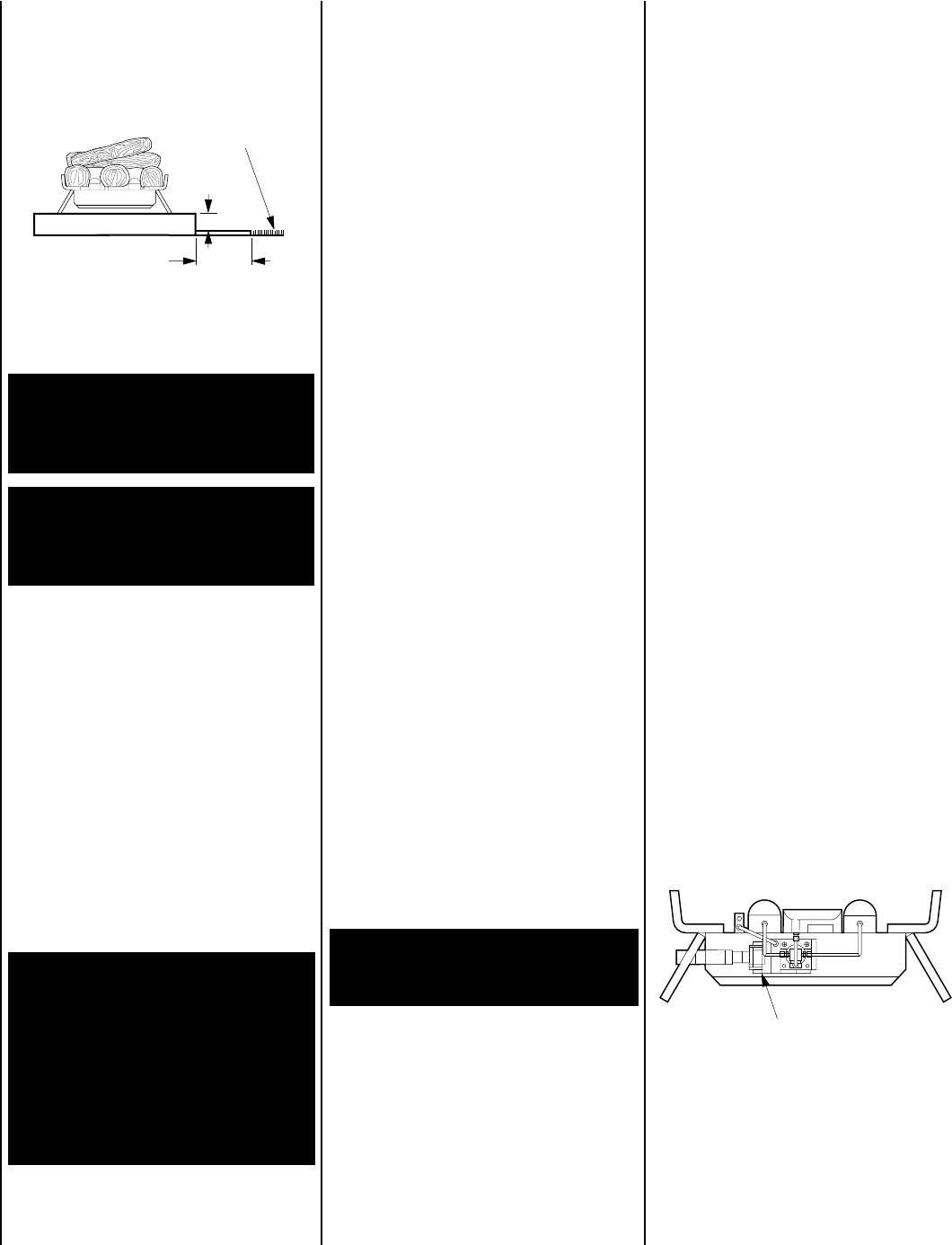
NOTE: DIAGRAMS & ILLUSTRATION NOT TO SCALE.
6
Checking Gas Connections
Secure all joints tightly using appropriate
tools and sealing compounds (ensure pro-
pane resistant compounds are used in
propane applications).
Turn on gas supply and test for gas leaks,
using a gas leak test solution (also referred to
as bubble leak solution).
Note: Using a soapy water solution (50% dish
soap, 50% water) is an effective leak test
solution but it is not recommended, because
the soap residue that is left on the pipes/
fittings can result in corrosion over time. Never
use an open flame to check for leaks.
A. Light the appliance (refer to safety and
lighting instructions on pages 12 and 14.
B. Brush all joints and connections with the
gas leak test solution to check for leaks. If
bubbles are formed, or gas odor is detected,
turn the gas control knob to the “OFF” posi-
tion. Either tighten or refasten the leaking
connection and retest as described above.
C. When the gas lines are tested and leak free,
be sure to rinse off the leak testing solution.
D. When the gas lines are tested and leak free,
observe the individual tongues of flame on the
burner. Make sure all ports are open and
producing flame evenly across the burner. If
any ports are blocked, or partially blocked,
clean out the ports.
Gas Pressure Check
Check inlet gas pressure to ensure it is within
the limits specified in the chart on page 2. Test
gage connections are provided on the front of
the gas control valve (identified A for the mani-
fold and E for inlet pressure.
Figure 8
The pressure should be checked with the gas
heater burning and the control set to high (3).
Replace the test point plugs after pressure
measurement ensuring no gas leaks.
Gas Valve (Pressure
Test Points Located
On Front)
A qualified gas appliance installer must install
this heater.
Check gas type: The gas supply must be the
same as stated on the heater’s rating plate. If
the gas supply is different, DO NOT INSTALL
the heater. Contact your dealer for the correct
model.
Step 1. Placement of the Heater – Center the
heater in the fireplace or firebox. Make certain
the grate front feet sit inside the front edge of
the fireplace or firebox clear of any operating
screens.
Step 2. Connecting Gas Line – A qualified gas
appliance installer must connect the gas room
heater to the gas supply.
Consult all local codes.
Route gas line using techniques and materials
prescribed by local and/or national codes. Only
use gas line of ¹⁄₂" or greater diameter to allow
full gas volume to the gas fireplace. Undue
pressure loss will occur if the pipe is too small.
When rigid pipe is used, an ANSI approved
manual shut-off valve and union must be in-
stalled upstream of the heater within the fire-
place cavity.
Ensure that a sediment trap is installed in the
existing gas line, if not, install a sediment trap
upstream of the heater to prevent moisture and
contaminants from passing through trap to the
heater controls and burners. Failure to do so
could prevent the heater from operating reliably.
An external regulator must be used on all pro-
pane (L.P.G.) heaters to reduce the supply tank
pressure to 13" w.c. (maximum). Any copper
tubing used to supply propane (L.P.G.) from
the tank must be internally tinned.
IMPORTANT: HOLD HEATER VALVE SE-
CURELY TO PREVENT MOVEMENT WHEN
CONNECTING TO INLET GAS LINE
WARNING: CONNECTING DIRECTLY TO
AN UNREGULATED PROPANE (L.P.G.)
TANK MAY CAUSE AN EXPLOSION.
The heater gas inlet connection is ³⁄₈" NPT at
the regulator, made on the right side facing the
heater. If a left side gas line is required, the gas
line may be led under the rear of the heater to
end at the right hand side for connection to the
inlet. However, this method is not recom-
mended. For an easier connection to the
Unvented Gas Log Room Heaters, connection
fittings have been supplied with the firebox.
Cut and flare tubing to fit.
The room heater base may be lower than 5"
above the combustible flooring materials if
the combustible flooring materials are more
than 14" from the fireplace or firebox opening
(
Figure 7
).
Figure 7
Combustible
Material
Can be less
than 5"
14" Min.
(Both Sides Of Opening)
INSTALLATION
WARNING: DO NOT ALLOW FANS TO
BLOW DIRECTLY INTO THE FIREPLACE.
AVOID ANY DRAFTS THAT ALTER
BURNER FLAME PATTERNS.
WARNING: DO NOT USE A BLOWER IN-
SERT, HEAT EXCHANGER INSERT OR
OTHER ACCESSORY NOT APPROVED
FOR USE WITH THIS HEATER.
This appliance must not be operated without a
fireplace screen installed. Fireplace screens
must not impair the free flow of combustion air
to the appliance.
Do not burn solid fuels in any fireplace equipped
with this listed unvented gas room heater.
Installed decorative glass door enclosures must
be fully opened when operating this listed un-
vented gas room heater.
Any outside air ducts and/or ash dumps that are
part of the original solid fuel burning fireplace
system must be fully closed and sealed at the
time of installation of this listed unvented gas
room heater.
WARNING: SPECIAL CARE IS REQUIRED
IF YOU ARE INSTALLING THE UNIT INTO
A SUNKEN FIREPLACE. YOU MUST RAISE
THE FIREPLACE FLOOR TO ALLOW AC-
CESS TO GAS LOG CONTROLS. THIS WILL
INSURE ADEQUATE AIR FLOW AND
GUARD AGAINST SOOTING. RAISE THE
FIREPLACE FLOOR USING NONCOMBUS-
TIBLE MATERIALS.



